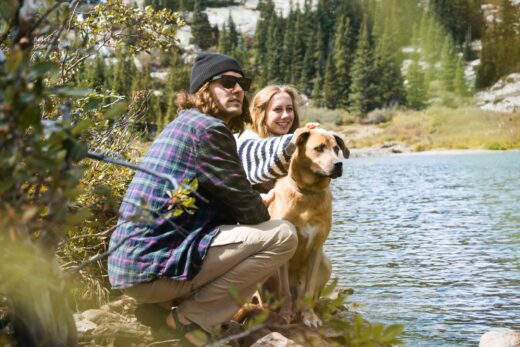Are you throwing a fresh lint roller into your cart every time you go to the grocery store, adding a daily vacuuming session to your chores roster, or accepting dog hair as an Avante Garde part of your wardrobe?
Shedding might seem like an inescapable part of pet parenthood, especially seasonal shedding. You may wonder, “Do dogs shed more in the summer?” if you own an adorable husky or golden. But, you can try a few time-tested tricks to improve your dog’s coat health and—in some cases—decrease their shed volume.
In this guide, we’ll explore eight potential solutions for excessive shedding in dogs. A combination of vigilance, improved grooming techniques, and diet changes could transform your mega-shedder into a hair health icon.
8 Solutions for Shedding
Is your dog shedding a lot? Whether you suspect seasonal changes, allergies, or a more significant underlying cause, the eight tips below could provide pups—and pet parents—with relief from excessive shedding.
#1 Talk to Your Vet
If your dog’s shedding has significantly increased in a short period of time, they’re starting to show signs of hair loss, or you observe other noticeable changes in their appearance or behavior, you should make an appointment with your vet to discuss potential underlying causes.
Hair loss and skin irritation can be symptoms of more severe issues that may not present other easily-identifiable symptoms, like:1
- A reaction to parasites, like ticks, fleas, lice, and mites
- Fungal, viral, or bacterial infections
- Seasonal, environmental, or food allergies
- Stress or anxiety
- Sunburn
- Immune issues
- Medication side effects
- Kidney, liver, or thyroid conditions
We don’t want to alarm pet parents—major shedding doesn’t always signify major health problems. But, any significant changes to your pet’s coat, skin, appearance, or behavior should be addressed with your vet in an effort to identify potential health issues as soon as possible.
#2 Step Up Your Brush Game
How often do you brush your dog? Brushing can help you keep your pet’s coat clean and shiny or even help you spot pesky skin conditions.
Brushing can also reduce your dog’s likelihood of shedding.2 By brushing the looser, weaker hairs from their skin, you can make way for stronger, healthier hairs to grow—they’ll fall out during the brushing process instead of littering your floor, collecting on your car seats, or floating aimlessly in the air.
Here are a few tips to brush like a pro:
- Start slowly – Your dog might not enjoy brushing at first. Offer them treats to help them associate grooming with a positive reward, giving extra treats when they sit still or endure longer sessions.
- Acclimate nervous pups – Depending on your dog’s history, they may have an adverse reaction to grooming tools—brushes included. Before graduating to a dog brush, start with wide-toothed human combs or hairbrushes to help your pup get used to the brushing sensation.
- Choose the right tools – Your dog’s coat will determine the most effective brush. If you’re not sure which tool to choose, ask your vet or groomer for tips.





